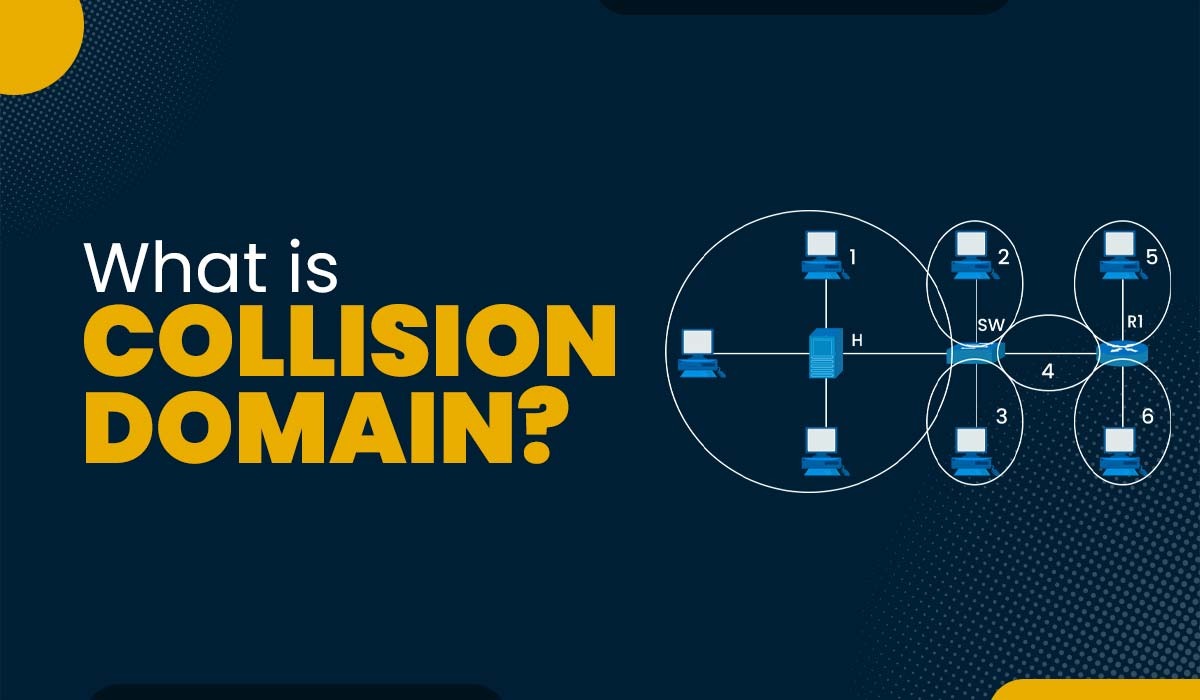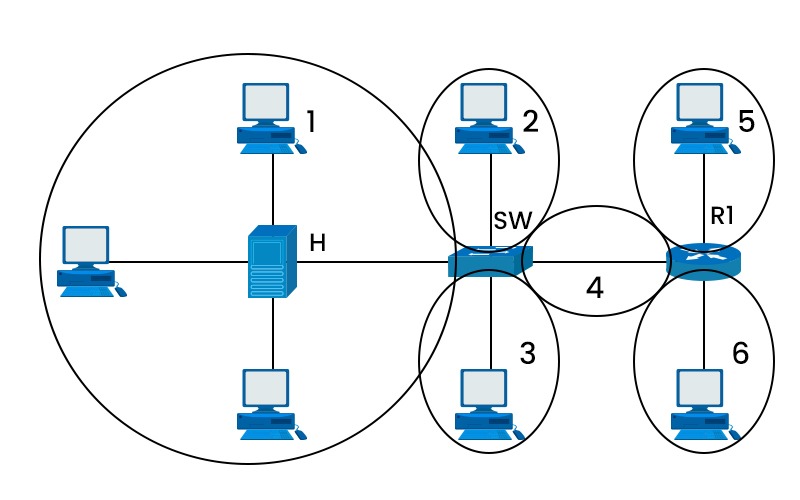What is Collision Domain?

In the networking field, various network devices are utilized for different purposes. Hubs, switches, routers, and other network devices are utilized to perform different tasks within a network infrastructure. In order to analyze the functionality and effectiveness of network devices, various metrics, defined as standards or systems of measurement, are used. The Collision domain is a metric used in networking. In this blog, we will explain the Collision-domain, how collision domains work, what factors affect them, and how to avoid or minimize them using different network devices and protocols. Before getting into the details, let’s first understand what a domain really is. A domain refers to a network that is managed by multiple network devices within a single network, known as network controllers. Mainly domains are classified into two categories, i.e., the Collision-domain and the Broadcast domain. Below we have explained the collision domain in detail. A collision domain refers to a specific segment inside a network infrastructure where packet collisions can occur. In simple words, it is a network segment where only one device can transmit data at a time. If more than one device tries to send data simultaneously, a collision occurs, and data loss can happen. Collisions reduce the efficiency and performance of a network, as devices have to wait and retransmit their data after a random backoff time. Each port on a hub belongs to the same collision domain. Hence collisions happen often in such an environment. However, each port exists in a bridge, switch, or router in its own separate collision domain. As shown in the picture, you can see the collision domain. Here ‘h’ is the hub, ‘sw’ is a switch, and R1 is the router. We can see that there is a single collision domain in the case of the hub, whereas separate collision domains exist in the case of the router and switch. Here are the differences between hub, switch and router. Collisions happen when two or more devices on a shared network medium try to send data simultaneously. The shared medium can be a wire, a cable, or a wireless channel. Some of the factors that affect collision are: To avoid or minimize collision domains in a network, several strategies can be implemented, such as: In previous network environments, where half-duplex was commonly used, or full-duplex was not possible, the deployment of routers emerged as the initial approach to address collision-domains. While it may not entirely eliminate the issues, implementing this solution would significantly reduce their impact. During that period, switches were known for their high cost. Routers are cost-effective as compared to switches. Introducing routers into a topology with the sole purpose of dividing collision domains can be a challenging task. But today, there exist other alternatives also. Switches create separate collision-domains for each port, meaning that only devices connected to the same port can collide with each other. Devices connected to different ports do not interfere with each other’s transmissions, as switches forward packets only to their intended destinations. Switches also support full-duplex mode, which allows devices to send and receive data simultaneously without collisions. The full-duplex mode requires two pairs of wires for each connection, one for sending and one for receiving. Using wireless networks instead of wired networks eliminates collision-domains altogether by using a different MAC protocol called Carrier Sense Multiple Access with Collision Avoidance (CSMA/CA). CSMA/CA works similarly to CSMA/CD, but instead of detecting collisions, it avoids them by using a mechanism called Request-to-Send/Clear-to-Send (RTS/CTS). Here are the differences between CSMA CD and CSMA CA. In the case of wireless networks, because of channel saturation, a lot number of collisions can occur. Many nodes using the same communication channel increase the possibility of collision between them. In order to limit the collision domain, it is crucial to have an adequate number of access points distributed over non-overlapping channels. The collision-domain refers to a specific network segment that allows bidirectional traffic transmission. A broadcast domain refers to a certain sort of domain in which network traffic circulates over the whole network. A hub is neither a collision domain nor a broadcast domain. Switches are another common example of a collision domain in use. Each port on a switch represents a potential collision-domain. In simple words, a switch’s collision domain count is proportional to the number of ports it has. A switch with 24 ports has 24 possible collision domains. The OSI layer that defines the collision-domain is the “data link layer”, i.e., layer 2, which is responsible for the physical and logical transmission of data between nodes on a network. Collision-domains are network segments where only one device can transmit data at a time. It is an important concept to understand for network design and troubleshooting. By knowing what is collision domain, what are the factors that affect them, and how to avoid or minimize them, you can optimize your network performance and reliability. You can learn more about Collision Domains in our Online CCNA Training.Introduction
What is Domain?
What is Collision Domain?

Factors Affecting Collision Domains
How to Avoid or Minimize Collision Domains
Router
Switches and Full Duplex
Using wireless networks instead of wired networks
Avoid channel saturation
Frequently Asked Questions
Q1 – What is collision and broadcast domain?
Q2 – Is hub a collision domain?
Q3 – What are collision domain examples?
Q4 – What is the OSI layer collision domain?
Conclusion







